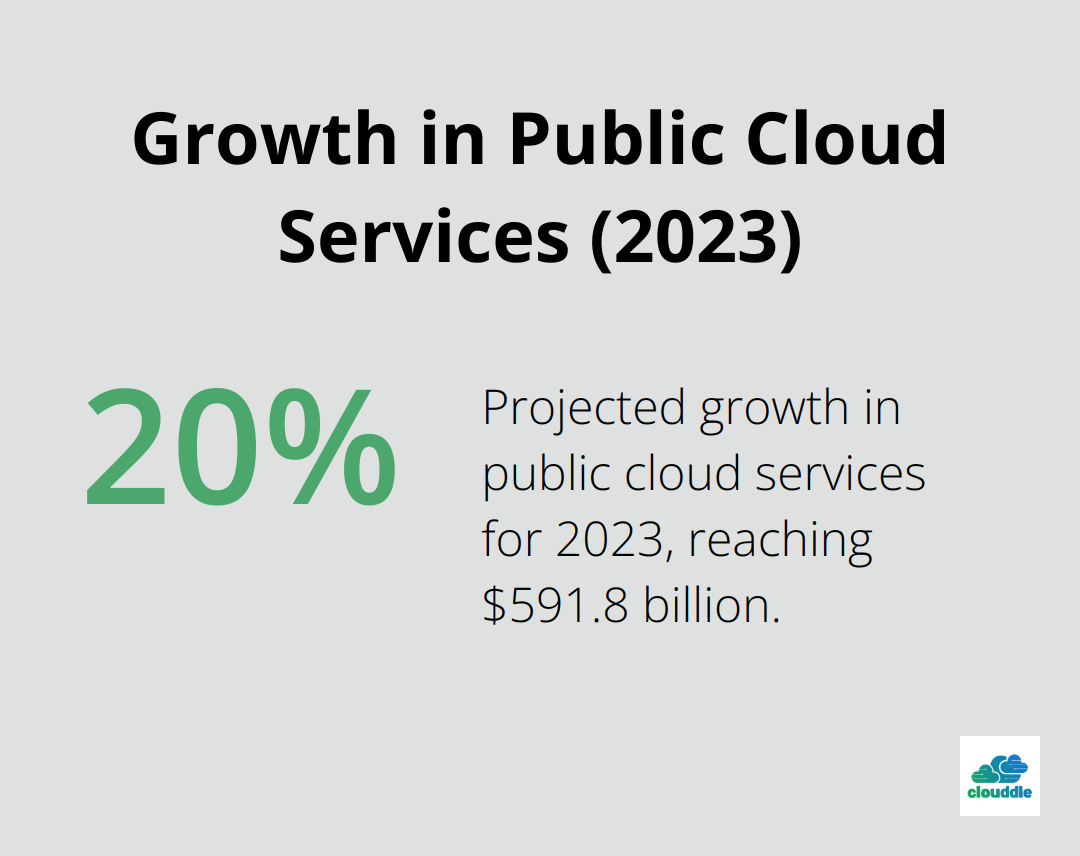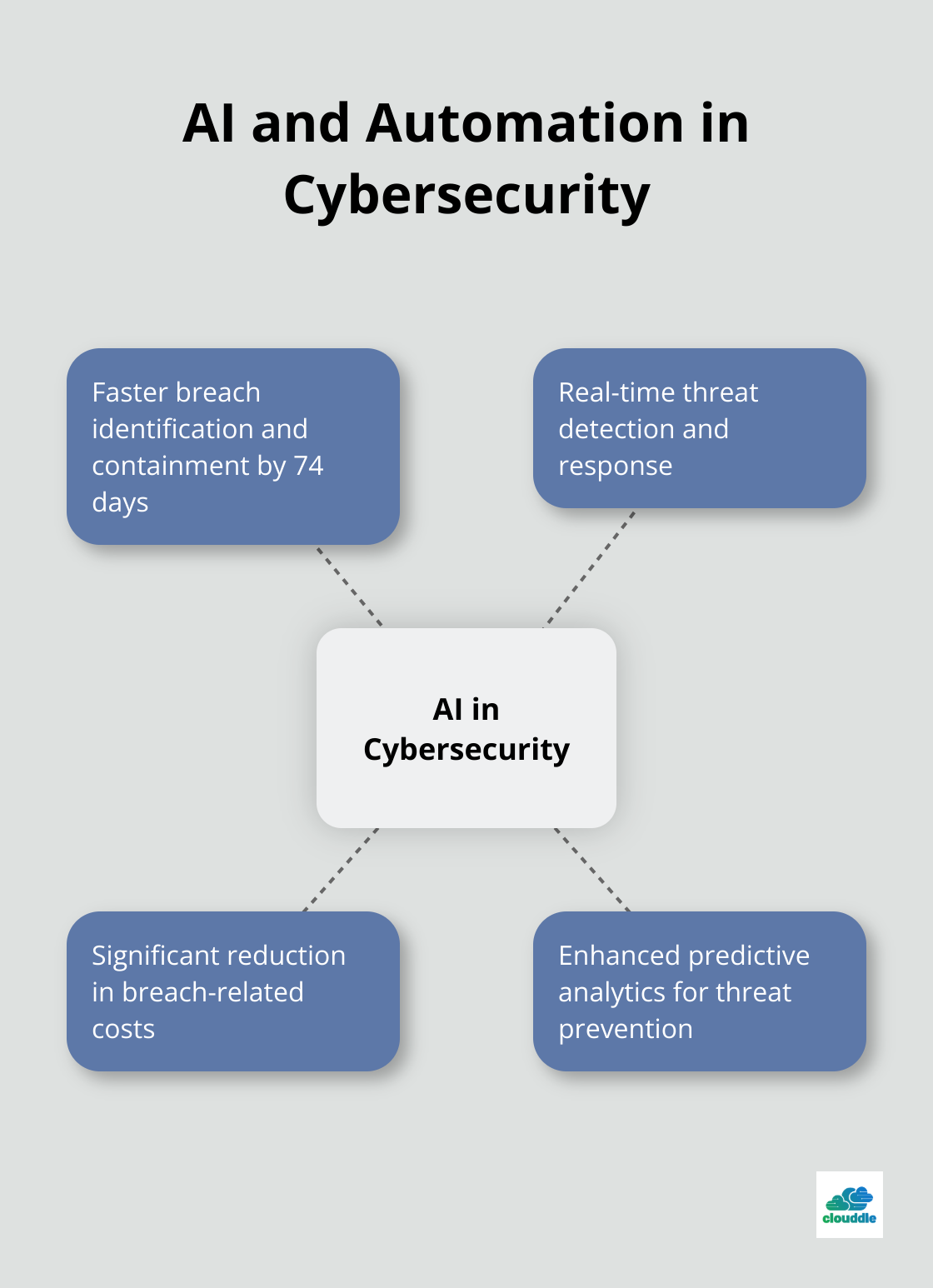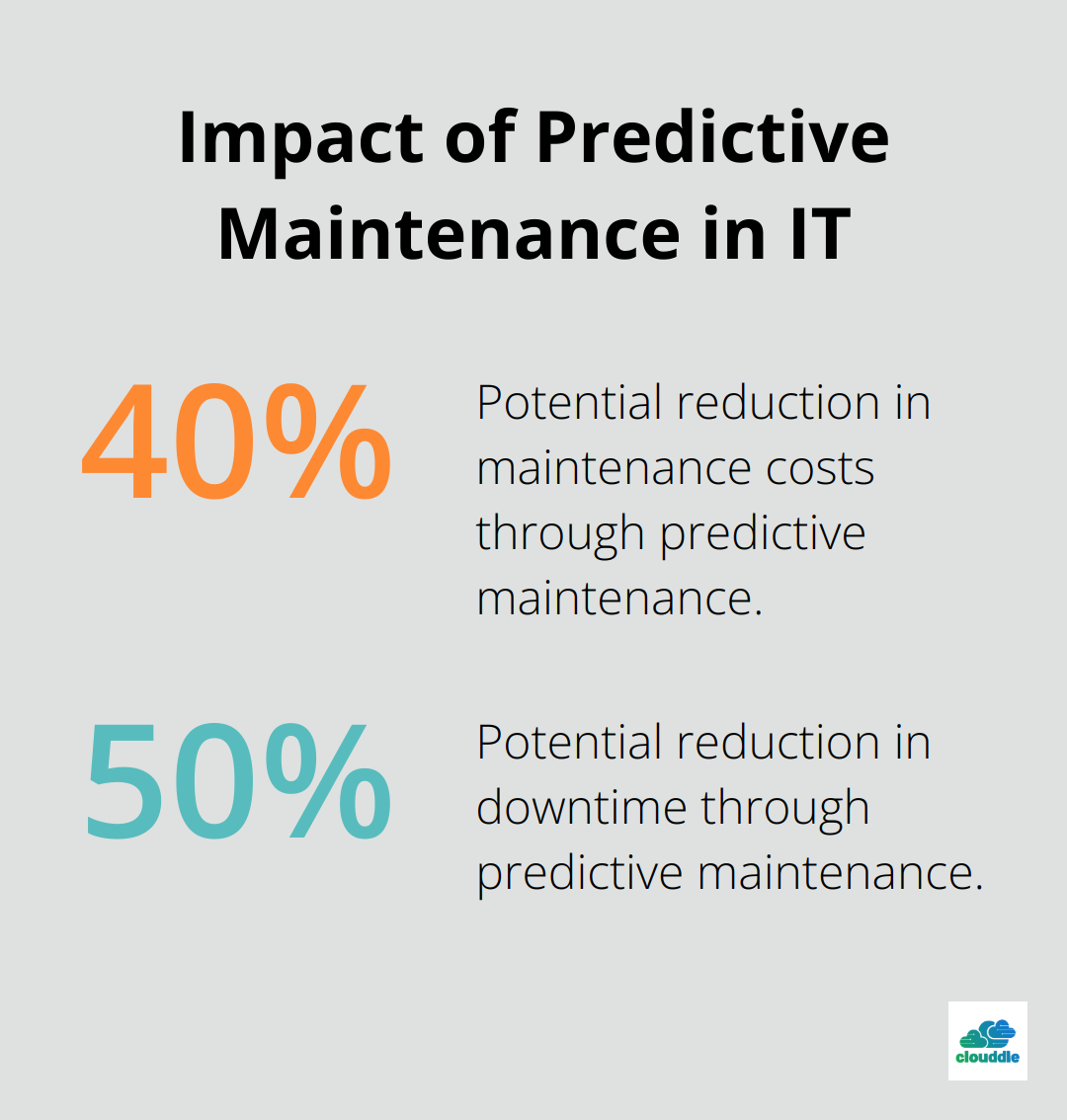Managed IT services are evolving rapidly, reshaping how businesses handle their technology needs. At Clouddle, we’ve observed significant shifts in the industry, from the widespread adoption of cloud-based solutions to the integration of advanced cybersecurity measures.
The latest managed IT services industry trends point towards increased automation, AI-driven processes, and a growing emphasis on proactive problem-solving. These developments are not just changing the landscape of IT management but also redefining how companies approach their overall technology strategies.
Cloud Revolution in Managed IT
Cloud Adoption Accelerates
The landscape of managed IT services experiences a seismic shift as businesses migrate from traditional on-premises solutions to cloud-based alternatives. This transition reshapes how organizations approach their IT infrastructure, offering unprecedented flexibility and scalability. A recent study by Gartner projects public cloud services to grow 20.7% in 2023, reaching a total market value of $591.8 billion. This rapid growth underscores the increasing confidence businesses have in cloud-based managed IT services.

Flexibility Fuels Innovation
Cloud-based solutions provide a level of flexibility that was previously unattainable with on-premises infrastructure. Organizations can now easily adjust their IT resources based on demand, ensuring they don’t overpay for unused capacity or struggle with insufficient resources during peak times. This elasticity proves particularly valuable for businesses with seasonal fluctuations or rapid growth trajectories.
Cost Optimization Strategies
The move to cloud-based managed IT services is also driven by significant cost benefits. A study by Flexera found that 78% of organizations focus on the volume of workloads migrated in 2025. Cloud services allow businesses to reduce their IT infrastructure costs while gaining access to powerful computing resources on-demand, freeing up resources for strategic initiatives.
Resource Allocation Reimagined
Cloud-based solutions transform how IT resources are allocated within organizations. IT teams can focus on more strategic projects that drive business value instead of maintaining and upgrading physical infrastructure. This shift in resource allocation leads to increased innovation and competitive advantage for businesses that embrace cloud-based managed IT services.
Security in the Cloud
As businesses transition to cloud-based solutions, security remains a top priority. Cloud providers invest heavily in security measures, often surpassing what individual organizations can implement on-premises. This enhanced security posture (coupled with regular updates and patches) ensures that businesses can leverage the benefits of cloud technology without compromising on data protection.
The cloud revolution in managed IT services continues to reshape the industry, offering unprecedented opportunities for businesses to scale, innovate, and optimize their operations. As we move forward, the focus shifts to another critical aspect of managed IT services: cybersecurity. In an increasingly digital world, robust security measures have become more important than ever.
Cybersecurity: The New Cornerstone of Managed IT
In today’s digital landscape, cybersecurity stands as the linchpin of effective managed IT services. The approach to security has shifted dramatically, moving from reactive measures to proactive strategies that safeguard critical assets and data.
AI Revolution in Threat Detection
Artificial Intelligence (AI) and Machine Learning (ML) transform the cybersecurity landscape. These technologies enable real-time threat detection and response, which significantly reduces the time to identify and mitigate potential breaches. A report by IBM indicates that organizations using AI and automation in their security processes can identify and contain breaches 74 days faster than those that don’t (potentially saving millions in breach-related costs).

Proactive Defense Strategies
Modern managed IT services now incorporate predictive analytics to anticipate and prevent cyber threats before they materialize. This approach involves continuous monitoring of network traffic, user behavior, and system vulnerabilities. Advanced endpoint detection and response (EDR) solutions can now detect and isolate infected devices within minutes, which prevents the spread of malware across corporate networks.
The Human Factor in Cybersecurity
While technology plays a crucial role, the human element remains a critical component of cybersecurity. Employee training and security awareness programs are no longer optional extras but essential parts of a comprehensive security strategy. Phishing is a significant problem because it’s easy, cheap, and effective, making them widespread cyber-attacks. Victims of phishing scams may end up with serious consequences.
Effective security awareness training should be tailored to specific roles within an organization and include regular simulations of phishing attacks and social engineering tactics. This hands-on approach helps employees recognize and respond to real-world threats more effectively.
Compliance and Regulatory Challenges
As data protection regulations (like GDPR and CCPA) continue to evolve, managed IT services must adapt to ensure compliance. This includes the implementation of robust data governance policies, regular security audits, and maintenance of detailed logs of data access and processing activities. Failure to comply with these regulations can result in severe financial penalties and reputational damage.
Zero Trust Architecture
The concept of Zero Trust has gained significant traction in recent years. This security model operates on the principle of “never trust, always verify,” which requires all users, devices, and applications to be authenticated and authorized before accessing network resources. The implementation of a Zero Trust architecture can significantly reduce the risk of data breaches and lateral movement within networks.
As cyber threats continue to evolve in sophistication and scale, the importance of cybersecurity in managed IT services will only grow. Businesses that prioritize robust security measures, leverage AI and ML for threat detection, and invest in employee training will be better positioned to navigate the complex digital landscape and protect their valuable assets. The next frontier in managed IT services lies in the automation and AI-driven processes that promise to revolutionize how businesses handle their technology needs.
How AI Transforms Managed IT Services
The integration of Artificial Intelligence (AI) into managed IT services revolutionizes the way businesses handle their technology needs. AI-driven solutions reshape the landscape of IT management, offering unprecedented efficiency and insights.
Automation of Routine Tasks
AI is everywhere: Top companies, governments, researchers, and startups are already enhancing their work with Google’s AI solutions. This transformation is evident in the day-to-day operations of IT departments, where intelligent systems now handle routine tasks such as software updates, patch management, and system monitoring. This frees up IT professionals to focus on more strategic initiatives.
AI-driven chatbots now handle a significant portion of routine help desk queries, which reduces response times and improves user satisfaction. These systems learn from each interaction, continuously improving their ability to resolve issues without human intervention.
Predictive Maintenance and Problem-Solving
One of the most impactful applications of AI in managed IT services is predictive maintenance. AI algorithms analyze vast amounts of data from network devices and systems to identify potential issues before they cause disruptions. According to McKinsey, predictive maintenance can reduce maintenance costs by 10 to 40 percent and reduce downtime by 50 percent.

AI systems predict when a server is likely to fail based on performance metrics and historical data. This allows IT teams to schedule maintenance or replacements during off-peak hours. Such foresight minimizes unexpected outages and ensures business continuity.
Data-Driven Decision Making
The power of AI in data analytics transforms how businesses make IT decisions. Advanced algorithms process and analyze massive datasets in real-time, providing actionable insights that were previously impossible to obtain manually.
These investments pay off in the form of more informed decision-making processes. AI-powered analytics help organizations optimize their resource allocation and improve efficiency.
Enhanced Security Measures
AI enhances security measures by identifying unusual patterns that might indicate a cyber threat. This proactive approach to security helps organizations better protect their digital assets.
As AI continues to evolve, its impact on managed IT services will only grow. From automating routine tasks to providing deep insights for strategic planning, AI is not just a tool but a transformative force in the IT landscape.
Final Thoughts
The managed IT services industry trends we’ve explored highlight rapid evolution in cloud solutions, cybersecurity, and AI integration. These advancements offer businesses unprecedented flexibility, enhanced security measures, and streamlined operations. Companies must adapt to these changes to maintain competitiveness and security in the digital landscape (which now demands proactive problem-solving and data-driven decision-making).
We at Clouddle recognize the importance of staying ahead of these trends. Our managed IT services help businesses navigate modern technology complexities, with solutions tailored for industries such as hospitality, multi-family dwelling, and senior living. We provide comprehensive services including networking, Wi-Fi, security, and data cabling to empower businesses in a connected world.
The managed IT services industry will continue to grow and innovate. Businesses that partner with forward-thinking service providers will harness emerging technologies, enhance operational efficiency, and maintain robust security. This ongoing digital transformation journey presents opportunities for growth and success when navigated with the right managed IT services.


